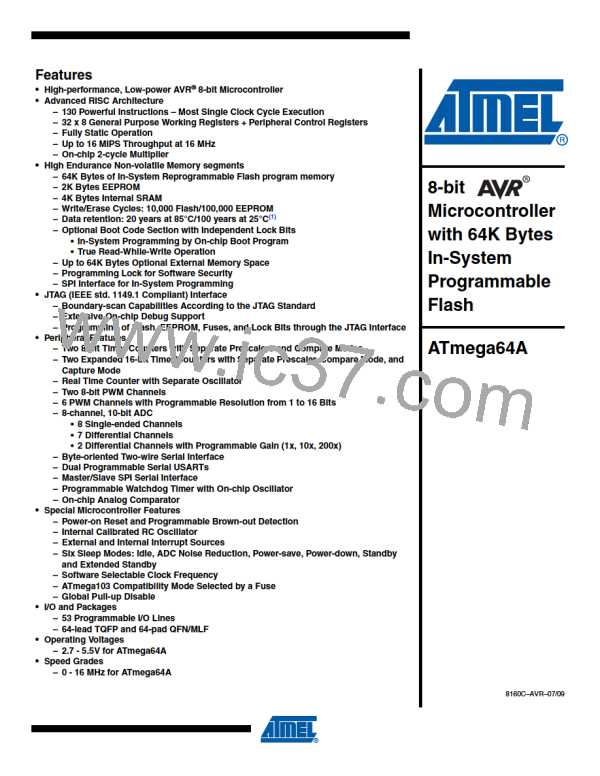ATmega64A
7.5
External Memory Interface
With all the features that the External Memory Interface provides, it is well suited to operate as
an interface to memory devices such as external SRAM and Flash, and peripherals such as
LCD-display, A/D, and D/A. The main features are:
• Four different wait-state settings (Including no wait-state).
• Independent wait-state setting for different external memory sectors (configurable sector
size).
• The number of bits dedicated to address high byte is selectable.
• Bus Keepers on data lines to minimize current consumption (optional).
7.5.1
Overview
When the eXternal MEMory (XMEM) is enabled, address space outside the internal SRAM
becomes available using the dedicated external memory pins (see Figure 1-1 on page 2, Table
13-3 on page 75, Table 13-9 on page 79, and Table 13-21 on page 87). The memory configura-
tion is shown in Figure 7-4.
Figure 7-4. External Memory with Sector Select(1)
Memory Configuration A
Memory Configuration B
0x0000
0x0000
Internal Memory
Internal Memory
0x0FFF
0x1000
0x10FF
0x1100
Lower Sector
SRW01
SRW00
SRW10
SRL[2..0]
External Memory
(0-60K x 8)
External Memory
(0-60K x 8)
Upper Sector
SRW11
SRW10
0xFFFF
0xFFFF
Note:
1. ATmega64A in non ATmega103 compatibility mode: Memory Configuration A is available
(Memory Configuration B N/A).
ATmega64A in mega103 compatibility mode: Memory Configuration B is available (Memory
Configuration A N/A).
23
8160C–AVR–07/09

 ATMEL [ ATMEL ]
ATMEL [ ATMEL ]